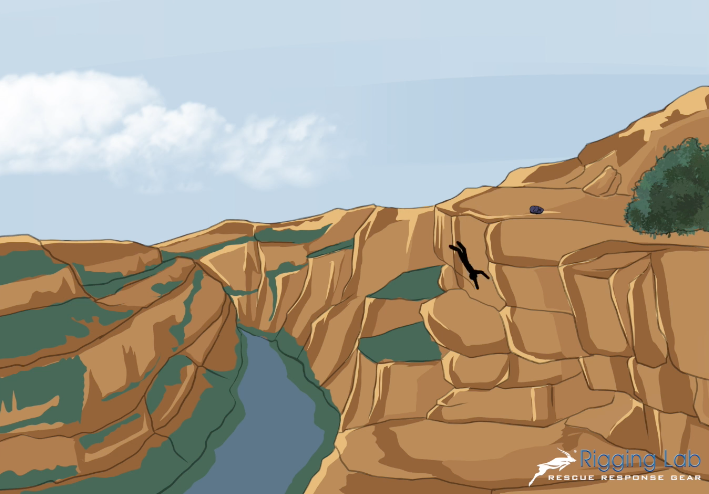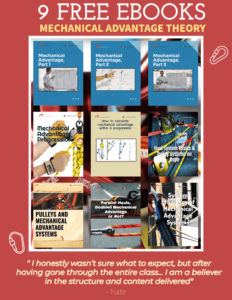This illustration features a climbing outing gone awry with a climber falling 60′ while checking the route at the edge before roping up. The Rescue Response Team responds employing a high angle raise with the Arizona Vortex side A-frame in tandem with a backboard immobilization lifting harness and litter to bring the fallen climber back up the cliff for air evacuation. – A basic script of what a normal “tailgate” meeting would look in the eyes of the planner. As a visionary planner, things might look straight forward, but in the eyes of the “stewards of the systems”… this might not be the case.
For the purpose of lifting or moving heavy loads a block and tackle system consists of two or more pulleys connected by one common cord or rope that is threaded between the pulleys. As most know, pulleys are simply wheels on axles designed to assist or direct movement of the rope along the grooved circumference of the wheel. One pulley alone can be utilized to lift loads and apply forces to transmit power, but incorporating multiple pulleys into a system decreases the amount of applied force required to transmit the power to move the load.
A pulley, also known as a sheave or drum, most commonly has a groove on the wheel’s outside edge along the perimeter of the wheel between two flanges around the pulley’s circumference. The cord or rope is the drive element of the pulley or pulley system. When the rope in a pulley is pulled upon, the force applied to the rope compresses it against and into the V groove between the flanges of the pulley wheel creating sufficient friction to move the wheel, rotating the pulley wheel around its axle.
Multiple pulleys can be configured to form a block and tackle system for the purpose of providing a mechanical advantage to apply large forces in order to lift or move the heavy load more easily than with one pulley. Two pulleys together in a system form blocks. Blocks are arranged in such fashion that one moves with the load while the other is in a fixed position. The assembly of a set of two blocks with the rope threaded around the respective pulleys is called tackle. The rope threaded around the pulleys is referred to as reeving. The rope or cord that is reeved through the pulleys provides mechanical advantage. Mechanical advantage amplifies the force applied to the rope allowing for the moving or lifting of the load with less initial, original force. The end result is a system of pulleys that moves and lifts loads more easily while less force is applied when pulling upon the cord or rope.
Peace on your Days
Lance









